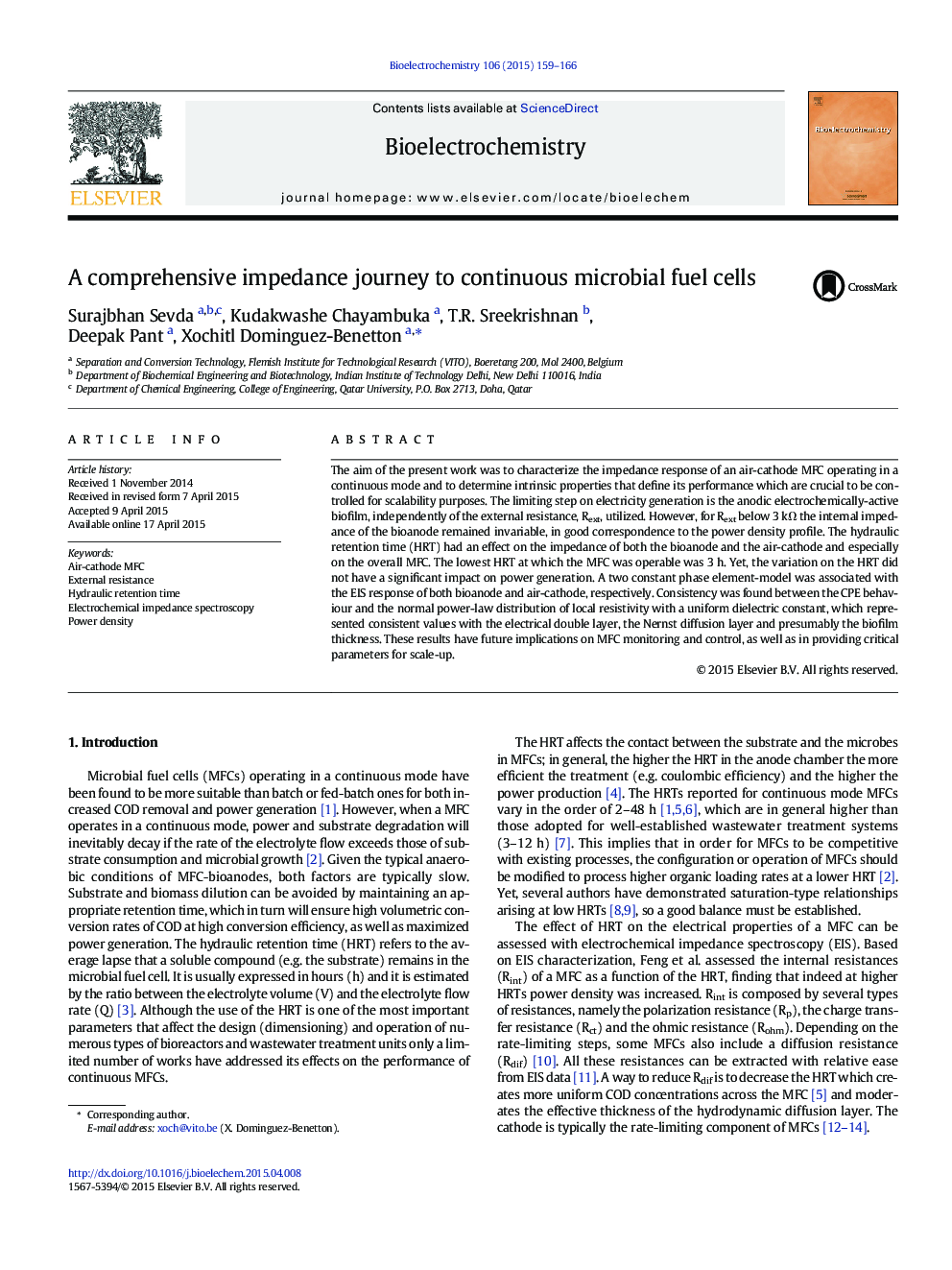| Article ID | Journal | Published Year | Pages | File Type |
|---|---|---|---|---|
| 1267873 | Bioelectrochemistry | 2015 | 8 Pages |
•The impedance response of an MFC operating in a continuous mode was examined.•The increase in external resistance reduced power density.•The change in hydraulic retention time did not impact power generation.•The limiting factor for electricity generation in the MFC was the anodic biofilm.
The aim of the present work was to characterize the impedance response of an air-cathode MFC operating in a continuous mode and to determine intrinsic properties that define its performance which are crucial to be controlled for scalability purposes. The limiting step on electricity generation is the anodic electrochemically-active biofilm, independently of the external resistance, Rext, utilized. However, for Rext below 3 kΩ the internal impedance of the bioanode remained invariable, in good correspondence to the power density profile. The hydraulic retention time (HRT) had an effect on the impedance of both the bioanode and the air-cathode and especially on the overall MFC. The lowest HRT at which the MFC was operable was 3 h. Yet, the variation on the HRT did not have a significant impact on power generation. A two constant phase element-model was associated with the EIS response of both bioanode and air-cathode, respectively. Consistency was found between the CPE behaviour and the normal power-law distribution of local resistivity with a uniform dielectric constant, which represented consistent values with the electrical double layer, the Nernst diffusion layer and presumably the biofilm thickness. These results have future implications on MFC monitoring and control, as well as in providing critical parameters for scale-up.
